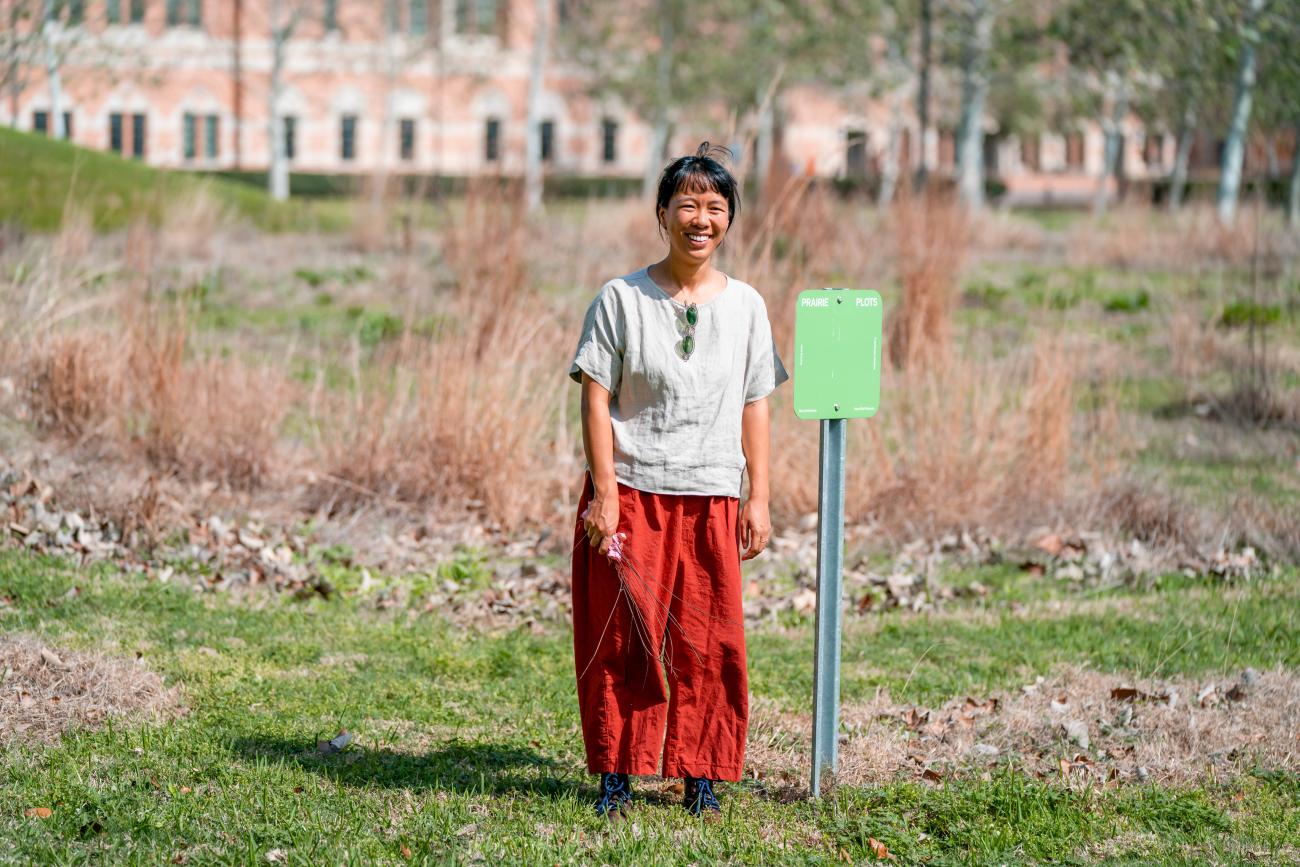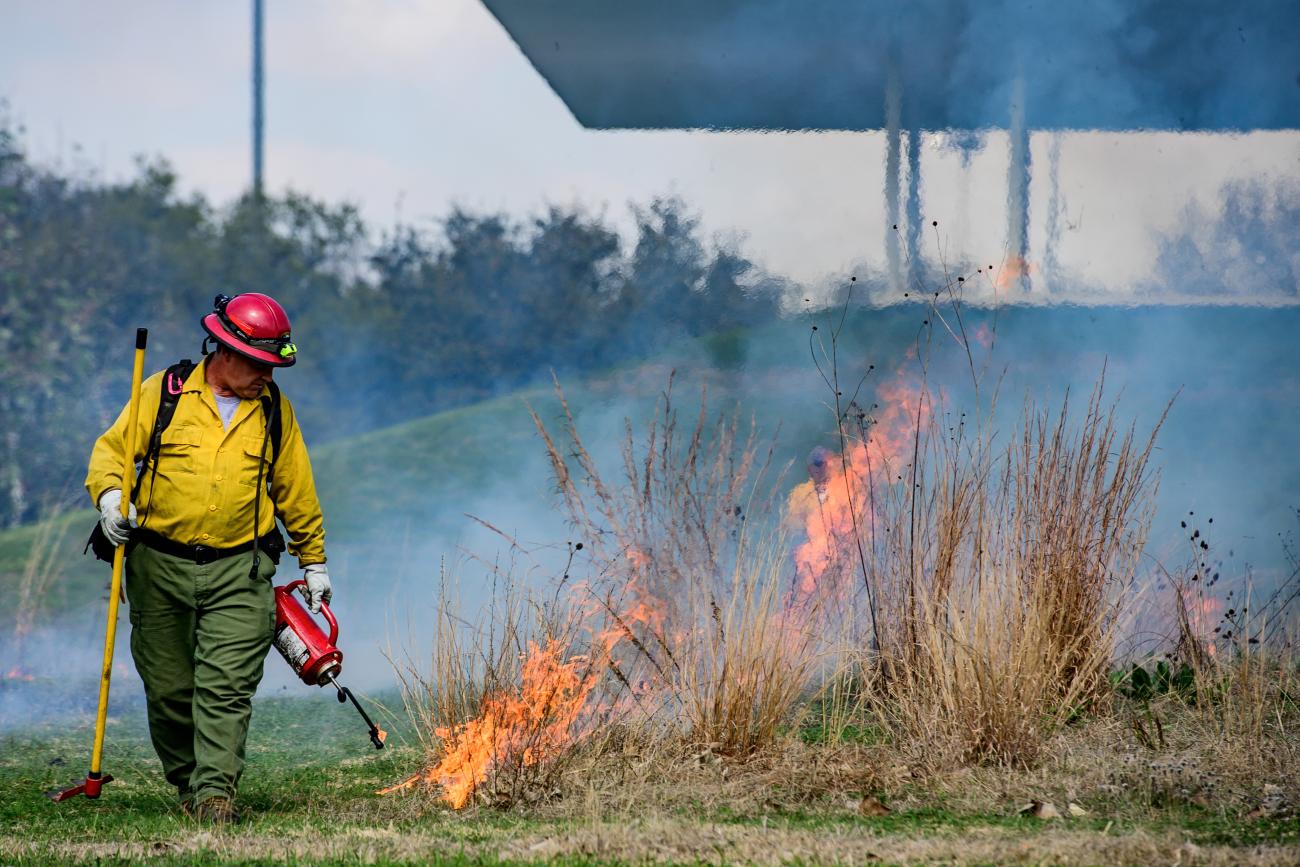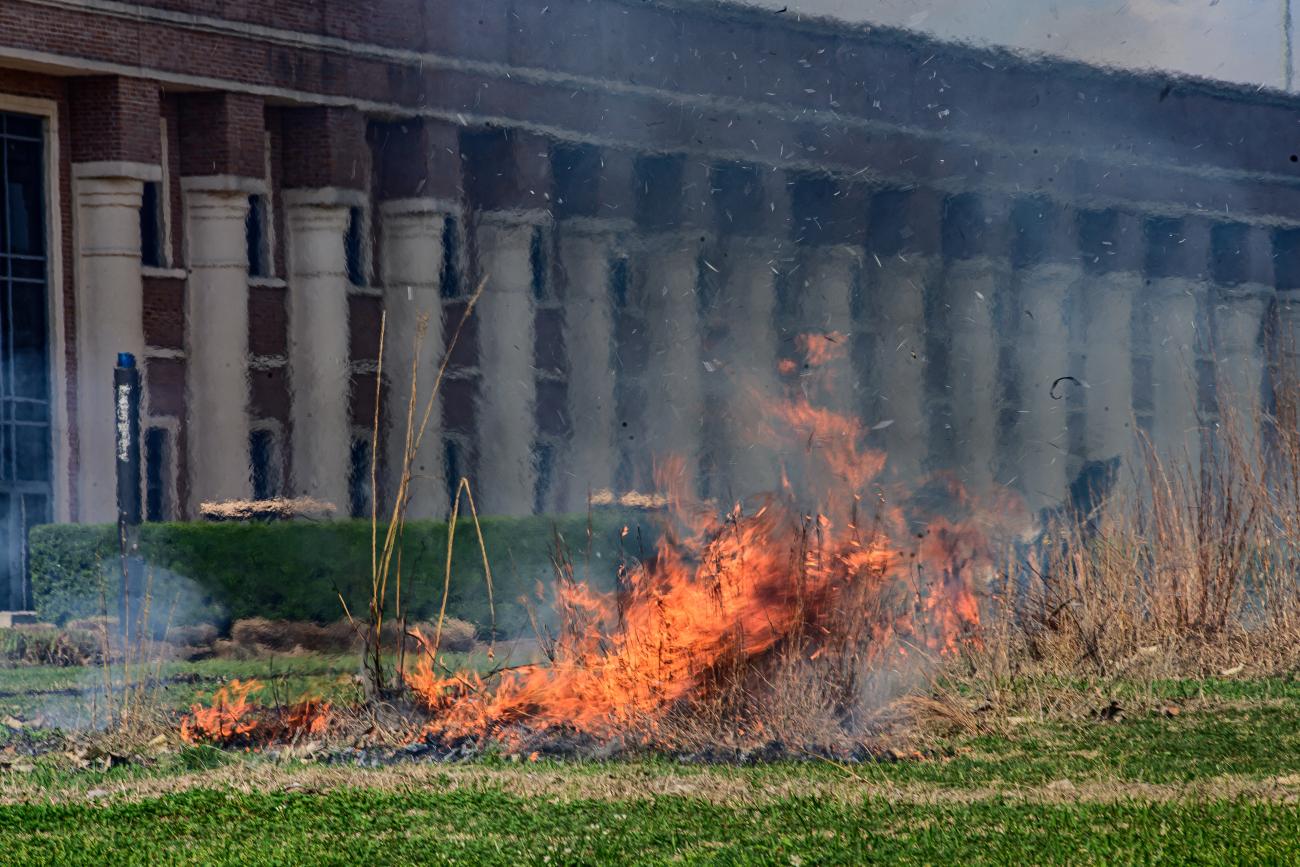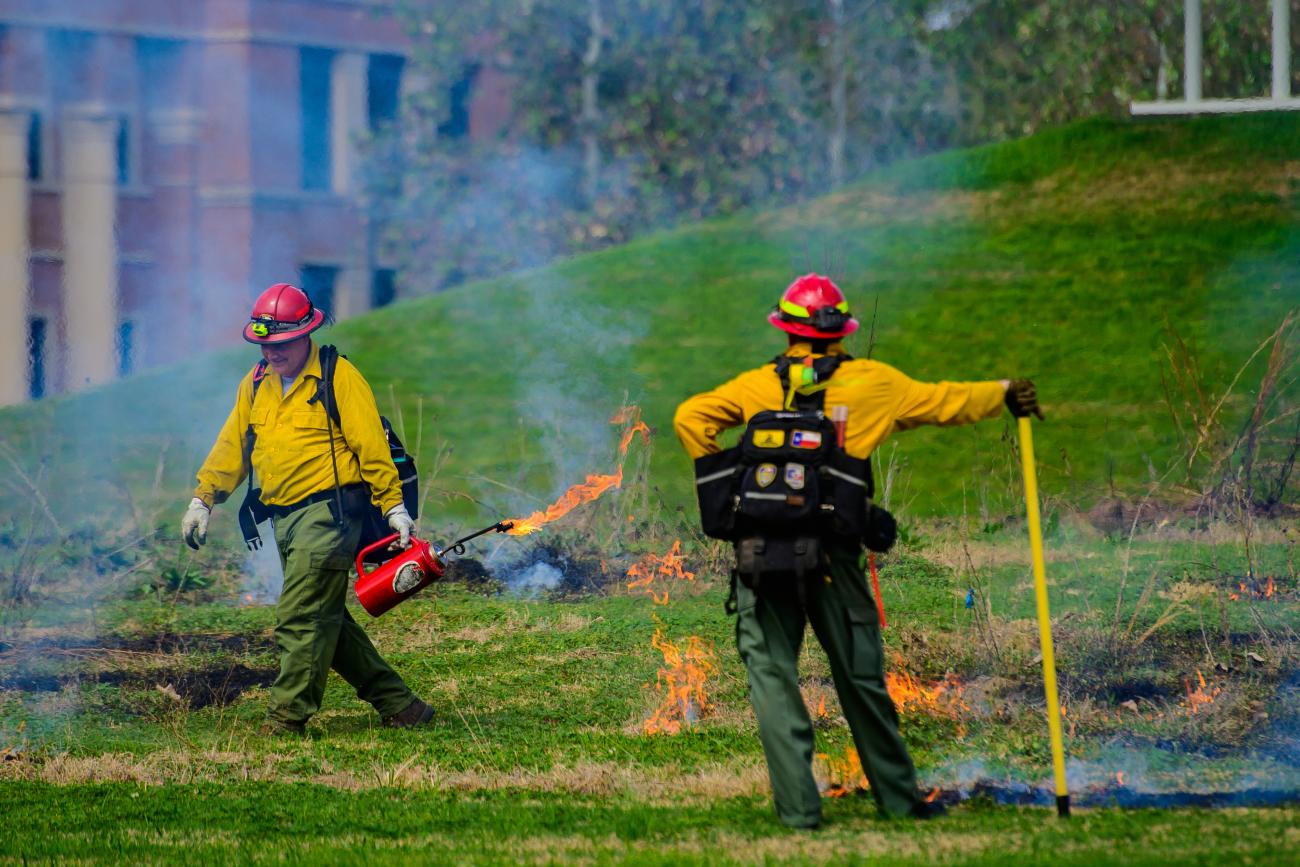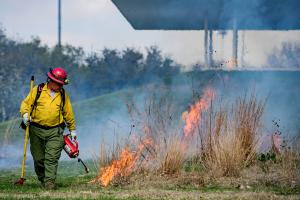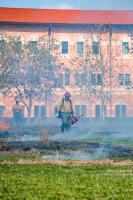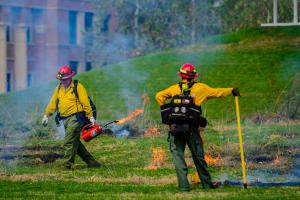On Tuesday, February 28, 2023, Rice University conducted its first prescribed burn on a roughly 10,000-square-foot area on campus. Maggie Tsang, Assistant Professor, School of Architecture, organized this burn as part of a larger landscape project called Prairie Plots. The installation, which was planted in March 2022, replaced an area of turf grass adjacent to the Shepherd School of Music and the Turrell Skyspace with a variety of locally-sourced, endemic prairie plants. As a collaboration between Rice School of Architecture and Rice Facilities Engineering & Planning, Prairie Plots draws attention to the environmental benefits of replacing lawns with diverse planting, from creating insect and bird habitats, to improving soil health, reducing flooding, and minimizing mowing and maintenance.
The prescribed burn at Prairie Plots is intended to demonstrate how fire is an important land management tool. Historically, fire regularly maintained the prairie landscapes of the Houston and Gulf Coast region; it helped suppress invasive species and promoted the regeneration and growth of perennial prairie species. Today, annual prescribed burns, conducted with the proper safety precautions, can be an ecologically beneficial way to maintain grasslands. Rice University worked closely with the Houston Fire Department (HFD) and Texas Parks and Wildlife Department (TPWD) to ensure that the prescribed burn at Prairie Plots met all necessary precautions. In addition, HFD and TPWD trained select individuals at Rice in burn protocols so that this process may be continued in future seasons.
Igor Marjanović, the William Ward Watkin Dean of Rice Architecture remarked, “Architecture, landscape, and built environments revolve around the lives of people and fluctuate with the cycles of use, the climate, and the properties inherent in all materials. The prescribed burning of land is just one example of such interdependence, and it is particularly powerful to see it used in the context of a university campus, where it blurs the boundaries between the urban and the rural, between the visual formality of landscape design and the cycles of material care that underpin its resilience." Read full coverage at these links by Rice News and The Rice Thresher .


